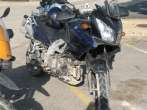Cornu Master School, Sliding course B, 2006-09-13
Home |
Motorcycle Pages
You can also watch these images as a slideshow.
Introduction
On 2006-09-13, Jacques Cornu's Master School organised a sliding course dedicated to big enduro bikes. We were 9 participants in this course,
with bikes as different as Honda Africa Twin, BMW R80GS, R1200GS(Adv), Triumph Tiger, KTM Adventure, Suzuki V-Strom and Buell XB12B.
The notes below are just a short summary of the exercises, as far as I remember them (we covered quite a lot of material during that day ;-)
Pictures ending with -rg are © by Roger Grütter, all other material by Jörg Hau.
On the way to Neuchâtel

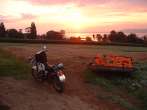

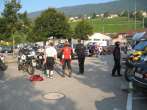

Planning your trajectory
- Plan your trajectory: Concept of "look where you want to go", yet gravel riding requires more than this:
You must not only plan your "general" path but you need also to be aware of that stone right in front of your bike.
- Crossing water: Go slowly but steadily.
- Stop and go on loose ground, uphill: Hold the bike with the rear brake! On an upward slope the front brake
will be useless since you do not have enough weight on it and the bike will slide back. - To get the bike
moving again, use a slipping clutch.
- Stop and go on loose ground, downhill: Same as above but (carefully) use the front brake. -
Much easier to get going again, since you do not need to play much with the clutch.
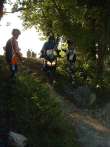

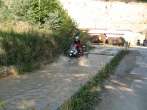
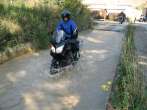
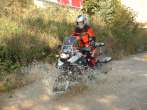
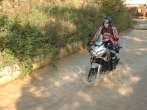
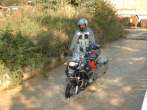
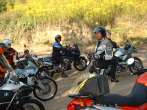
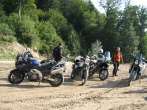
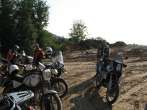
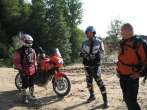
Controlling the bike
- Controlled spinning/sliding of the rear wheel on slippery ground: Deliberately ride over wet leaves etc, apply throttle,
and get a feeling for the point where the rear wheel starts to spin. The difference that one can experience between
different "spots" of leaves is amazing.
- Riding on a single-track in the forest: Slippery track, leaves and mud. Plan your trajectory carefully, including how
to get "in" the slippery section: if the front and rear wheel slip into different ruts, you're likely to drop the bike.
Plan where you can stop after going down a slope (even if this slope is only 1 m long).
- Riding without using the hands: On a traffic-free (!) downhill road, let the bike roll in 3rd or 4th gear,
and let go of the handlebar. Try to direct the bike just by shifting your weight etc. Note the long delay
between the moment where you start the movement and the time where the bike actually does what you intended.
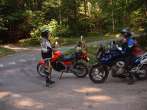
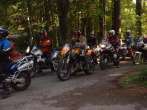
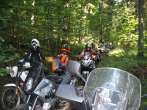
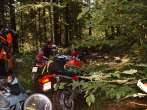
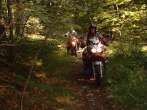
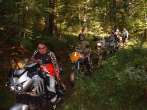
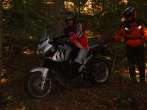

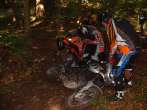
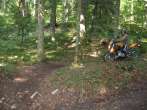
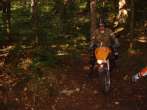
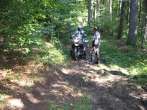
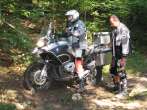

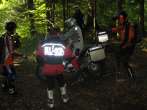
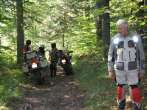
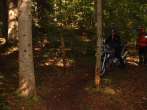

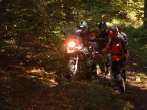
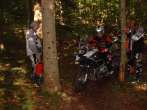
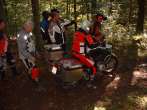
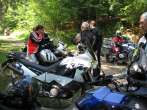

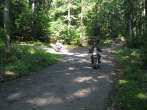
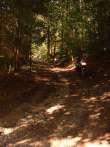
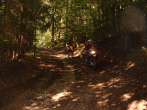
Lunch break
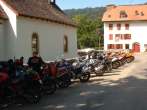


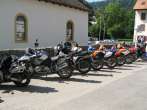



More practice
- Controlled sliding: On a gravel path, slightly "zig-zag" in 1st or 2nd gear. Whenever the bike is slightly leaning,
apply sufficient throttle so that the rear wheel starts to spin.
- Riding in a field: Get a feeling for the underground. Look out for ruts and bumps that are hidden by the grass.
Wet grass is almost as slippery as ice.
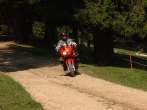
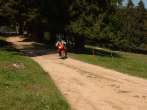
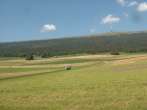
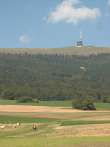
A dead Tiger ...
Dropped: footpeg and gear switch lever broken, oil loss from the engine housing. Repaired (as far as possible) on-site.

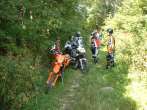

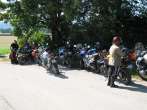
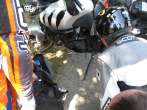
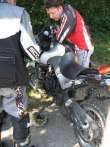
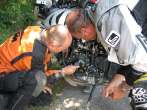
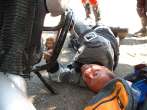
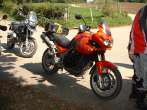
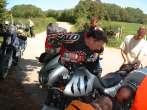

Even more practice
- Riding in deep mud: Keep the bike steady, do not stop, do not accelerate too much.
- Starting/stopping in huge bumps: Think to stop only when your legs can safely touch the ground,
i.e. when the wheels are in the lower parts of such a track (except if you are sufficiently tall, of course ;-)
- Riding over bumps: Stand in the footpegs, let the bike bounce, use your body to counter the movement.
Balance so that your head moves "horizontally" instead of bouncing around.
- Riding along a slope: It's mostly in your head.
- Crossing a slope, downhill: Plan your trajectory, then just go. Do not brake!
- Crossing a slope, uphill: Plan your trajectory, then get momentum and use sufficient throttle to
"just climb". Avoid jumping over the edge, i.e. reduce throttle just before the upper end of the slope.
- Crossing a slope with a curve, uphill/downhill:
Same as above; it's mostly in your head ;-)
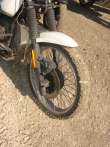
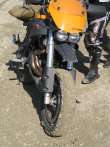

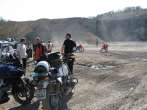
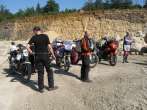
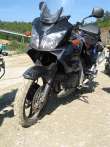
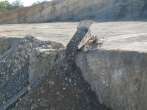

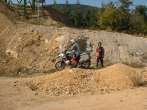
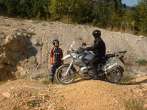
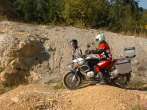
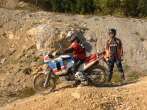
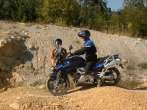
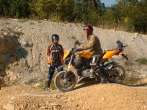
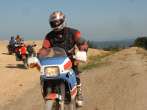
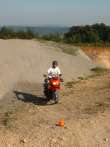
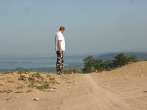
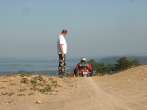
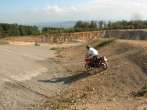
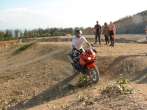
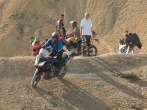
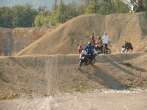
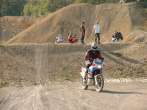

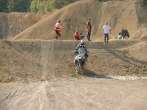
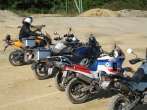
Back to Neuchâtel, finishing the day :-)
